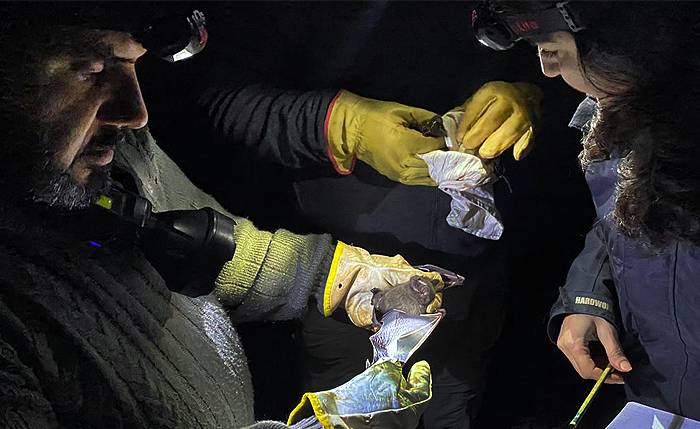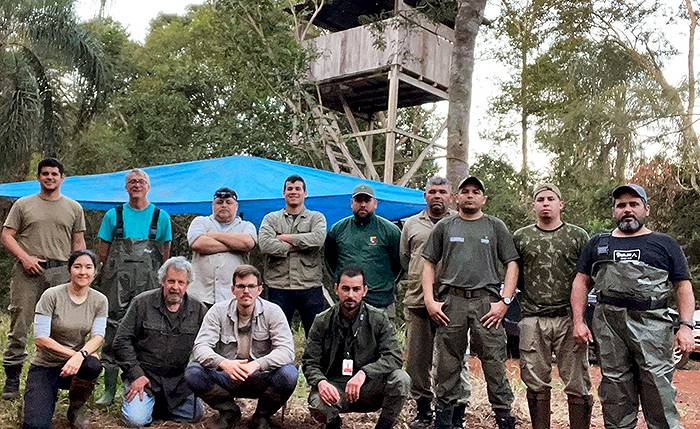
Richard Stevens broke up his mid-summer academic season far from the scorching plains surrounding Lubbock, taking the internationally recognized professor within Texas Tech University’s Department of Natural Resources Management to subtropical Paraguay.

Why fly 4,800 miles to the landlocked South American country? In a word, bats. Stevens, who also serves as curator of mammals for the university’s Natural Science Research Laboratory, spent 10 days in an on-going field research project collecting specimens as part of a broad survey of bats that make their home in the Reserva Natural Limoy.
The reserve is one of several protected areas within the Itaipu Biosphere Reserve administered by Itaipu Binacional, a renewable energy company that manages the Itaipu Dam. The Itaipu hydroelectric dam is the second largest in the world and supplies much of the energy for Paraguay and Brazil.
The reserve is the fifth largest parcel of Paraguay’s Atlantic Forest, a complex of 15 ecoregions that stretches from northeast Brazil into eastern Paraguay and northeast Argentina. Once a vast forest covering the entire eastern region of Paraguay, today only about 8 percent of the original 33,000 square miles remains.

According to Stevens, bat surveys and research efforts in endangered habitats such as the Atlantic Forest are critical to understanding biodiversity in these regions and informing conservation and management decisions.
“Bats are important vectors of reforestation and maintenance of current forest structure in more undisturbed areas,” Steven said. “Most of the bats in the Reserva Natural Limoy are frugivorous, meaning that they eat fruit. They’re also fairly unique in that they poop on the wing.”
“These bats are important seed disseminators for many tropical tree species,” he said. “Basically, they act as salt and pepper shakers across the landscape, spreading seeds everywhere.” To catch the bats, the scientists deployed mist nets along internal roads that the bats use as flyway corridors.
In addition to Stevens, the research team included Itaipu Binacional lead biologist Flavia Netto, retired biologist Nelson Perez, and Reserva Natural Itabo Veterinarian Thomas Goosen, as well as field biologists Cesar Manchini and Humberto Sánchez. Other members were lead park guard Carlos Aguilar, along with park guards Derlis Franco, Eduardo Vera, Yamil Arévalos, Marco Lugo, César Gauto, and Gabriel Fernández.
CONTACT: Richard Stevens, President's Excellence in Research Professor and Professor of Natural Resources Management, Davis College of Agricultural Sciences & Natural Resources, Texas Tech University at (806) 834-6843 or richard.stevens@ttu.edu
0718NM24
